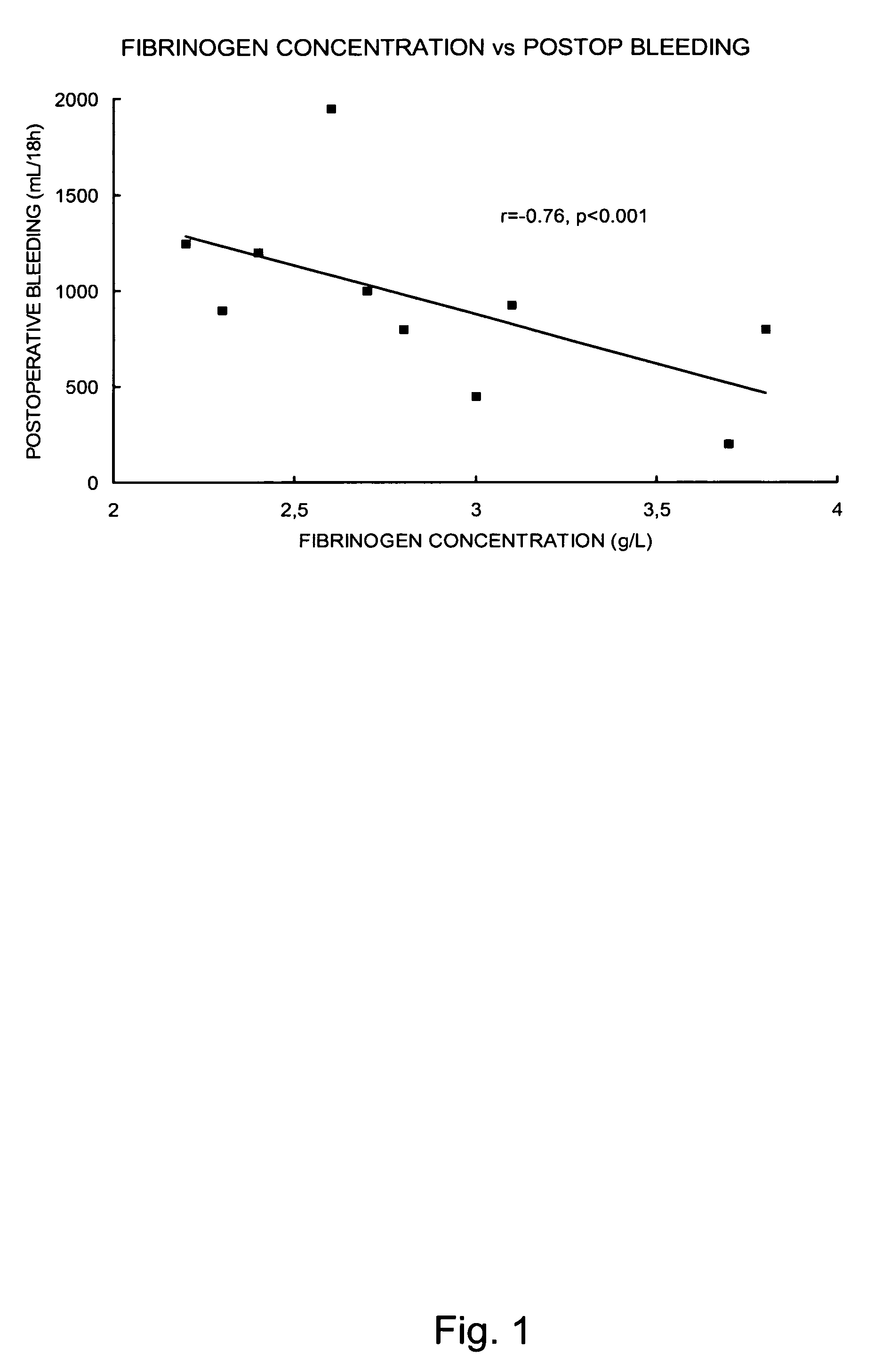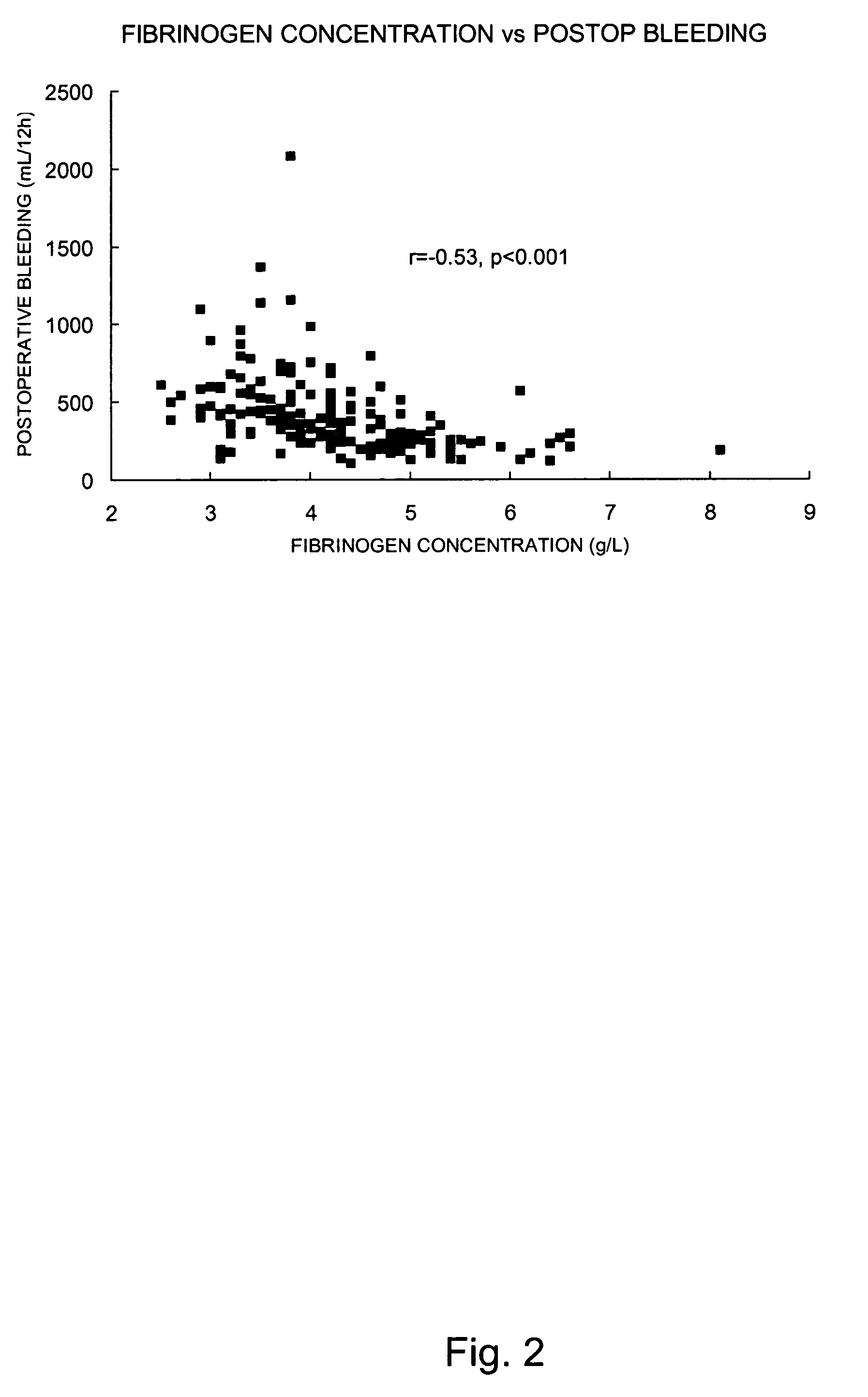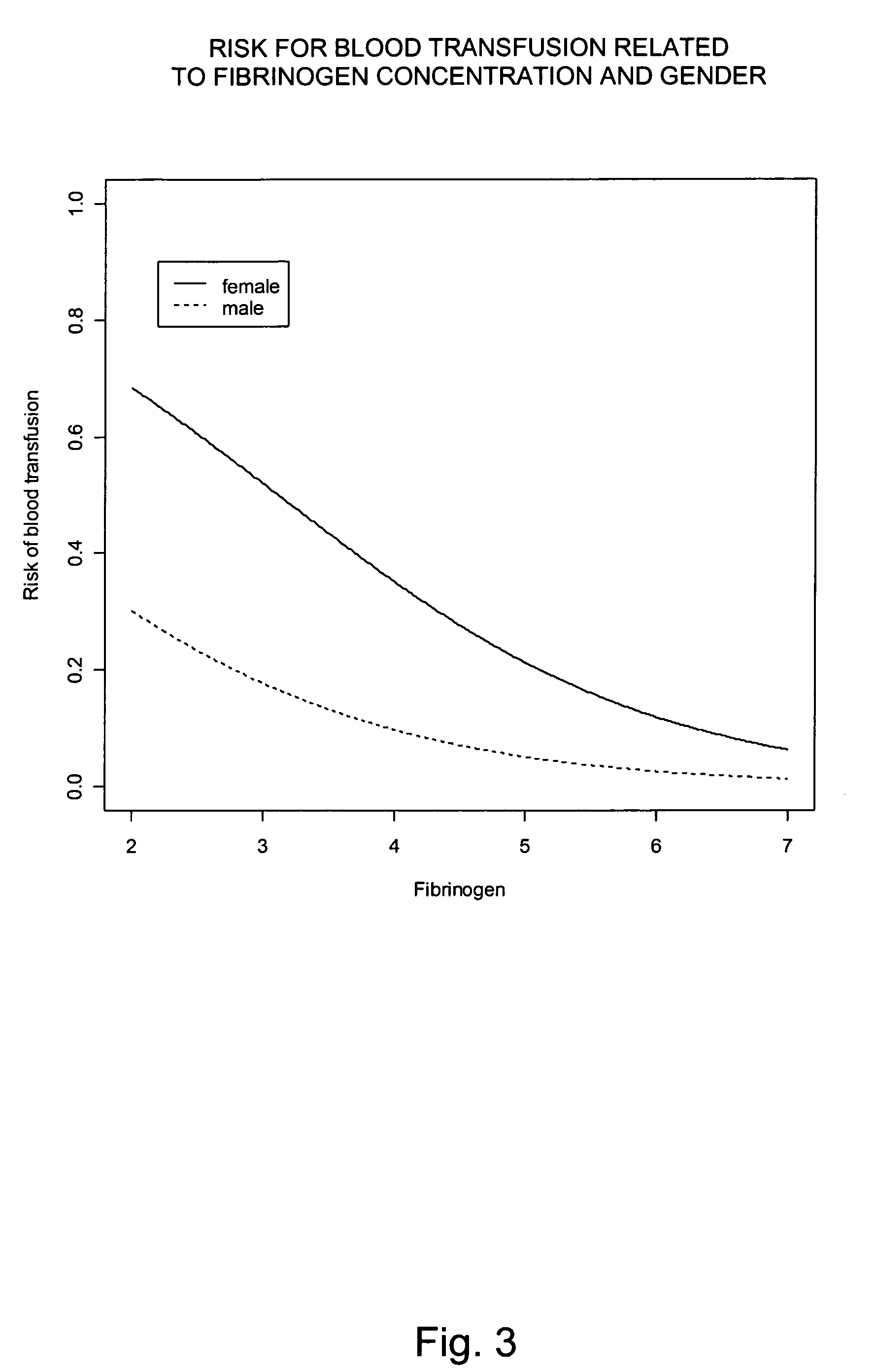Use of fibrinogen as a prophylactic treatment to prevent bleeding during and after surgery and as a biomarker to identify patient with an increased risk for excessive bleeding and blood transfusion
- Summary
- Abstract
- Description
- Claims
- Application Information
AI Technical Summary
Benefits of technology
Problems solved by technology
Method used
Image
Examples
example 1
Fibrinogen as a Selected Marker for Bleeding after Uncomplicated Off Pump Coronary Artery Bypass Surgery (OPCAB)
[0097]One common and important complication after cardiac surgery is bleeding. Bleeding may be caused by surgical factors or an impaired hemostasis, or a combination of both. Impaired post operative hemostasis may in turn be caused by different factors such as preoperative medication, underlying co-morbidities and the use of cardiopulmonary bypass (CPB). The aim of the study in this example was to investigate the association between selected markers of inflammatory activity, hemostasis and bleeding after uncomplicated off pump coronary artery bypass surgery. However, as reported below the present inventors found a close relationship between preoperative and postoperative fibrinogen levels and postoperative bleeding, despite the fact that all patients had preoperative fibrinogen concentrations within the normal range (2.0-4.5 g / L). Only results relating to fibrinogen are re...
example 2
Fibrinogen, a Potential Biomarker for Bleeding and Blood Transfusion after Cardiac Surgery
[0109]Based on the results obtained in Example 1, a prospective descriptive study was carried out including 170 patients operated with cardiopulmonary bypass. As described in the following only preoperative fibrinogen concentration was an independent predictor of postoperative bleeding. The results indicate that preoperative fibrinogen concentration (even within the normal range) is a limiting factor for postoperative hemostasis. Preoperative management of fibrinogen concentration provides information about the risk for extensive bleeding and blood transfusion after cardiac surgery.
Patients
[0110]Initially 175 consecutive patients (mean age 67 years, 75% males) undergoing first time elective coronary artery bypass grafting (CABG) were included in the study. Exclusion criteria were acute CABG, known hepatic disorder, known bleeding disorder and surgical bleeding at re-exploration. Five patients w...
example 3
Fibrinogen Concentrate Infusion in Cardiac Surgery Patients
[0139]The aim of the present study was to investigate the effect of administration of fibrinogen to patients undergoing elective coronary artery bypass grafting. All patients had preoperative levels of plasma fibrinogen in the low normal range (<3.8 g / L).
Patients
[0140]20 patients were included in the study; 10 in the fibrinogen group (FIB group) and 10 in the control group (randomized study). The patient characteristics were as follows:
FIB groupControl groupn1010age (years)66 ± 9 68 ± 8 Gender (M / F)9 / 19 / 1ECC time (min)73 ± 2670 ± 24Anastomoses (n)2.9 ± 0.72.9 ± 0.9Key: M = male,F = female,ECC = Extracorporeal Circulation
Clinical Management
[0141]The clinical management of the patients were identical as in Example 2.
Study Design
[0142]Prospective double-blind randomized study in 20 patients undergoing elective coronary artery bypass grafting with preoperative levels of plasma fibrinogen in the low normal range (<3.8 g / L). Exclu...
PUM
| Property | Measurement | Unit |
|---|---|---|
| Fraction | aaaaa | aaaaa |
| Fraction | aaaaa | aaaaa |
| Fraction | aaaaa | aaaaa |
Abstract
Description
Claims
Application Information
 Login to View More
Login to View More - R&D
- Intellectual Property
- Life Sciences
- Materials
- Tech Scout
- Unparalleled Data Quality
- Higher Quality Content
- 60% Fewer Hallucinations
Browse by: Latest US Patents, China's latest patents, Technical Efficacy Thesaurus, Application Domain, Technology Topic, Popular Technical Reports.
© 2025 PatSnap. All rights reserved.Legal|Privacy policy|Modern Slavery Act Transparency Statement|Sitemap|About US| Contact US: help@patsnap.com



